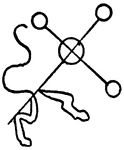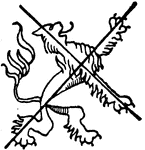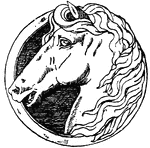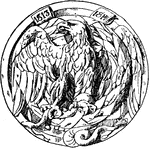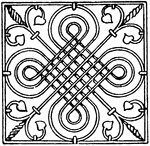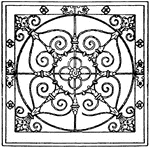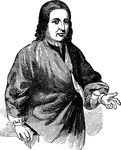
Nicolaus Ludwig Zinzendorf
Nikolaus Ludwig von Zinzendorf und Pottendorf, Imperial Count of Zinzendorf and Pottendorf, (May 26,…
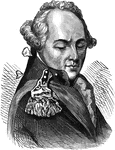
Frederick Adolph Riedesel
Riedesel was the commander of a regiment of soldiers from the Duchy of Brunswick (Braunschweig) among…

Two-Handed Sword
The two-handed sword or German Zweihänder, here of the 15th century showing the Second Guard or…
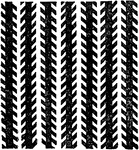
Zollner Illusion
The Zöllner illusion is a classic optical illusion named after its discoverer, German astrophysicist…
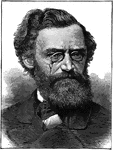
Carl Schurz
Carl Schurz (March 2, 1829 – May 14, 1906) was a German revolutionary, American statesman and…

Franz Sigel
Franz Sigel (November 18, 1824 – August 21, 1902) was a German military officer and immigrant to the…

Openwork Gable, From Front of Rouen Cathedral
A gable is the generally triangular portion of a wall between the edges of a sloping roof. A wimperg…

One Bay of Limburg Cathedral
The Catholic Cathedral of Limburg, also known as Georgsdom or Limburger Dom in German…

Dolphin Design
The Dolphin Design is part of an address by German artists, given to King Humbert of Italy.

Dolphin Design
The Dolphin Design is part of an address by German artists, given to King Humbert of Italy.
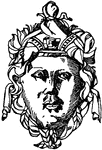
Female Grotesque Mask
The Female Grotesque mask was designed on a metal shield during the German Renaissance.

Female Grotesque Mask
The Female Grotesque mask was designed on a metal shield during the German Renaissance.

Pulled Grotesque Mask
This Pulled Grotesque Mask is on a pedestal of a column on a tomb in Pforzheim, Germany during the German…

Winged Grotesque Mask
This Winged Grotesque mask design comes from the spout of a can during the German Renaissance.

Melting Grotesque Mask
This Melting Grotesque Mask has an escutcheon design of a lock during the German Renaissance.
Trophy Door Panel
This trophy door panel was used as a decoration at a castle in Heidelberg, Germany during the German…
Trophy Door Panel
This trophy door panel was used as a decoration at a castle in Heidelberg, Germany during the German…

Thicker Trophy Pedestal
This thicker pedestal trophy was designed as part of a monument design to a Mar grave (noble) during…

Tassel Ribbon
This ribbon comes from Jost Amman's Wappen (coat of arms) during the German Renaissance.

Evolute Spiral Stove Tile
The evolute spiral stove tile is a painting during the German Renaissance. It is a wavelike pattern…
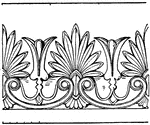
Modern German Cresting Border
This modern German cresting border was designed by Gropius of Berlin an Architect. It is found on the…
Tassel
This tassel was designed by German artist Holbein. It consists of a tuft of threads or cords hanging…
Tassel
This tassel was designed by German artist Holbein. It consists of a tuft of threads or cords hanging…
Leather Tassel
This leather tassel is a German Renaissance design found on a lady's bag. It is a simple knot to keep…
Column Decorated Shaft
The decorated shaft column is designed with intarsia a form of wood inlaying. It is a German Renaissance…
Stone Terminus Bust
This stone terminus bust is a German Renascence design used as a mantel-piece in a town hall.

Stone Parapet
The stone parapet is a German Renaissance design of scrolls found on the Dagobert tower, a castle in…

Renaissance Console
This Renaissance console is a German design found in a castle in Baden-Baden. It imitates the Doric,…
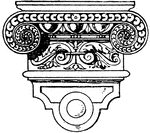
Renaissance Console
This Renaissance console is a German design found in a castle in Baden-Baden. It imitates the Doric,…
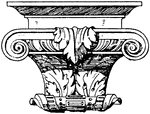
Renaissance Console
This Renaissance console is a German design found in the Heidelberg castle. It imitates the Doric, Ionic…
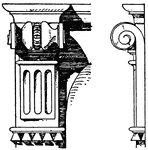
Renaissance Console
This Renaissance console is shown in its front and side view. It is a Late French design that is a Triglyph-console.
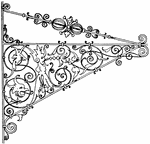
Wrought-Iron Bracket
The wrought-iron bracket is a German Renaissance style sign. It is richly decorated with chasing and…
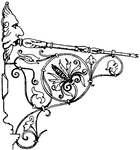
Wrought-Iron Bracket
This wrought-iron bracket is a German Renaissance style. It is a bearer of a conduit-pipe, richly decorated…
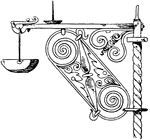
Wrought-Iron Bracket
This wrought-iron bracket is a German Renaissance style. It is a bearer of a water-stoup, found on a…
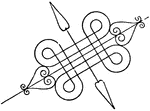
Wrought-Iron Bracket
This wrought-iron bracket is a German Renaissance style support for a Gargoyle.
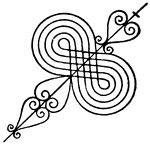
Wrought-Iron Bracket
This wrought-iron bracket is a German Renaissance style support for a Gargoyle.

Renaissance Square Panel
The Renaissance square panel is a modern German design that is done in intarsia (wood inlaying).
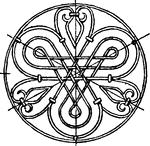
Renaissance Circular Panel
The Renaissance circular panel is a German design made out of wrought-iron.
Renaissance Strap-Work Frame
This Renaissance strap-work frame was made between 1576-1577 in Germany.

Renaissance Strap-Work Frame
This Renaissance strap-work frame was made between 1576-1577 in Germany. Made out of bronze tablets,…

Renaissance Strap-Work Frame
This Renaissance strap-work frame was made between 1576-1577 in Germany. Made out of bronze tablets,…
Renaissance Strap-Work Frame
This Renaissance strap-work frame was made between 1576-1577 in Germany.

German Typographical Frame
This German Typographical frame is a tablet from the triumphal entry of the Emperor Maximilian. It was…


